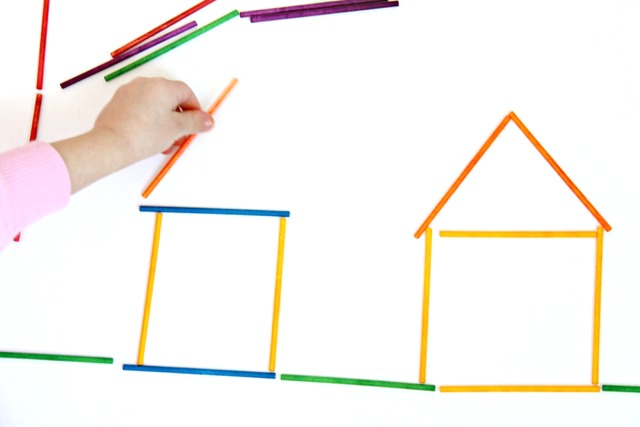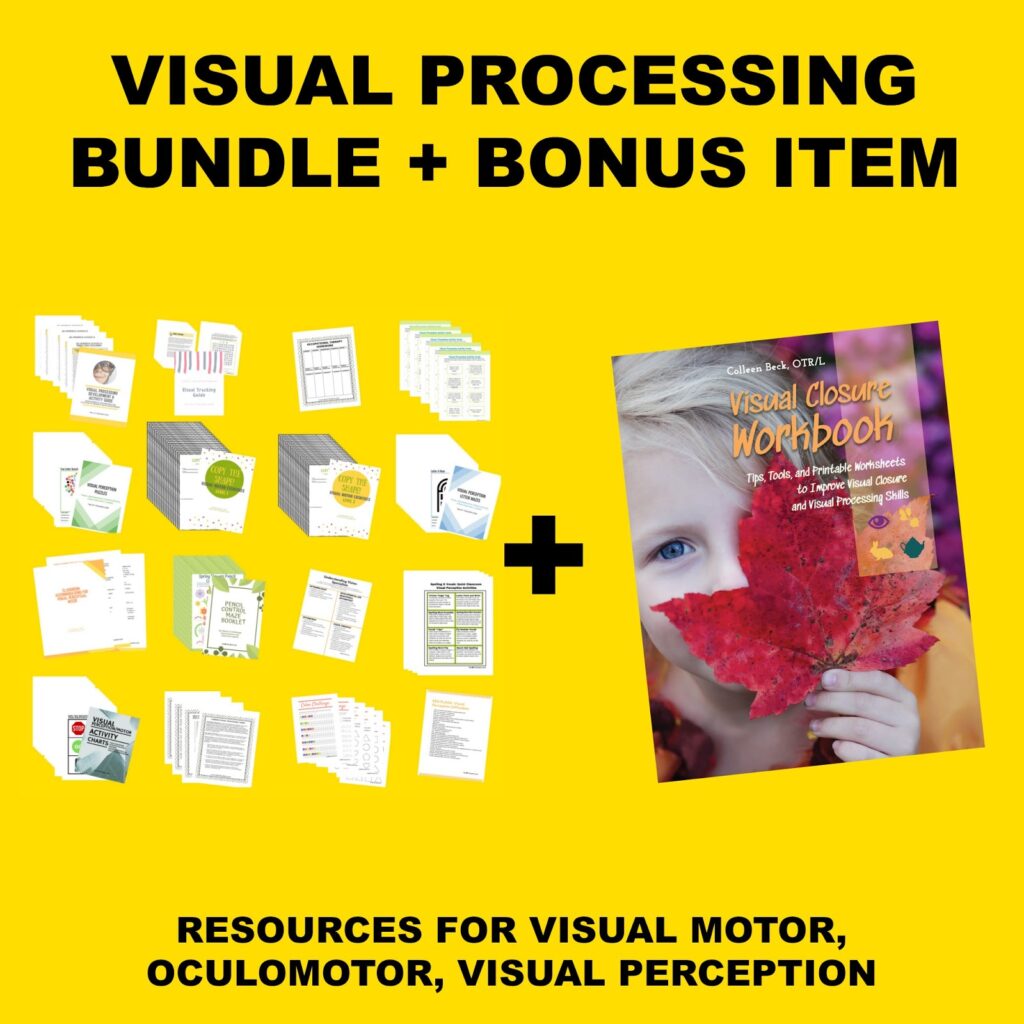Have you seen visual perceptual terms like Visual Memory and wondered, exactly What Is Visual Memory? Today we’re sharing how to use our dyed lollipop sticks in a few eye-hand coordination activities including visual memory, and explaining what this term means to development of handwriting, reading, and functional tasks.
This post contains affiliate links.
Amazon affiliate links are included in this blog post. As an Amazon Influencer, I earn from qualifying purchases.
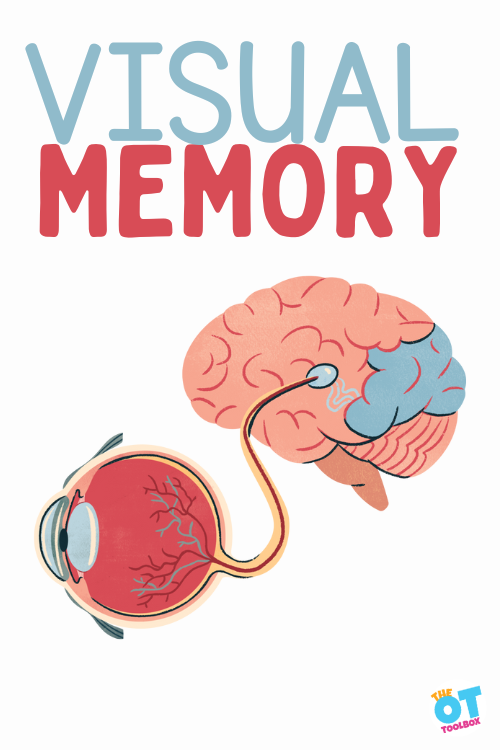
What is Visual Memory?
Visual Memory is one part of a large arena known as visual perceptual skills. Visual memory focuses on one’s ability to recall visual information that has been seen. Visual memory is a critical factor in reading and writing.
When a child is writing a word, he must recall the formation of parts of the letter from memory. It can be terribly frustrating for one with a visual memory deficit to perform a handwriting, spelling, or word copying exercise.
Children with difficulty in visual memory will have trouble copying letters, words, and sentences from a chalkboard or book. They may present with very slow handwriting, trouble forming letters, and mixing up letters or words within sentences.
Producing written work on worksheets and tests may be difficult. Recalling sight words in reading exercises can be hard as well as following along in a reading activity during stop and start tasks, due to comprehension and difficulty recalling what was read. Kids with visual memory deficits can demonstrate difficulty with formation of letters and numbers and appear “lazy” in their written work.
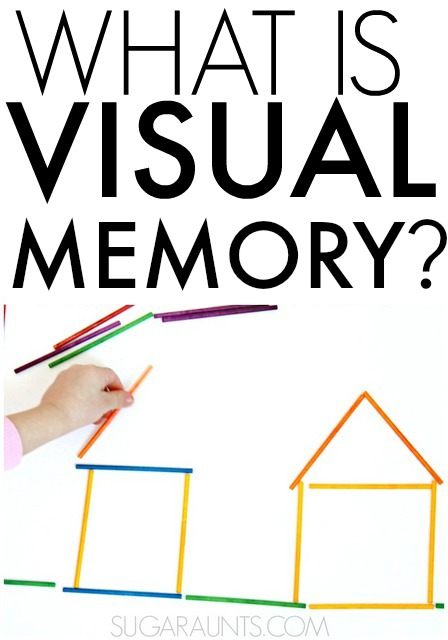
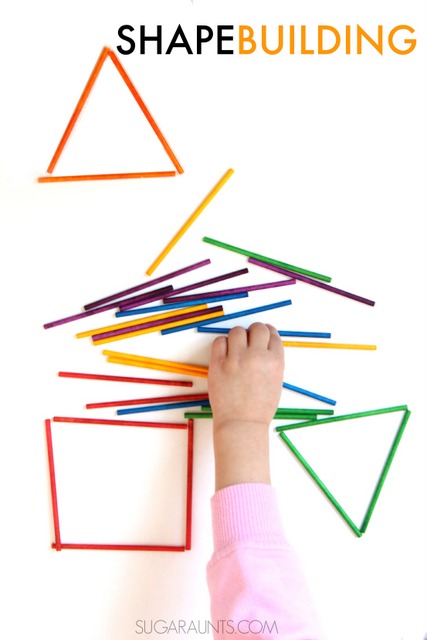
Visual Memory Shape Building Activity
We used our dyed lollipop sticks to build shapes. Make a shape example and have your child copy the form. You can grade the activity as more difficult by removing the example and having the child build the shape using their “mind’s eye”.
Assistance can be provided by giving visual or verbal prompts to assist with building simple shapes. Further extend this visual memory activity by engaging colors and building the shapes with all one color.
Then introduce shape forms with patterning or random colors. Once the child demonstrates succeeds with shape copying, encourage letter and number building using the lollipop sticks.
This simple activity can be extended in so many ways to help work on visual memory!
We did a few shape copying activities as well. Little Sister had fun creating a neighborhood of houses using our colored lollipop sticks.
Visual Memory Activities to help with Visual Memory Deficits:
- Memory Games (affiliate link)
games or Concentration games (affiliate link) - I Spy games and books (affiliate links)
- Encourage the child to recall the items to be found using visual memory.
- Form copying games, such as Pixy Cubes (affiliate link)
Shape sequencing games, like Mental Blox (affiliate link) - Place a tray of items in front of the child. Allow them 30 seconds to memorize all of the items. Cover the tray with a piece of paper. Ask the child to recall as many items as they can. Another version to this game is removing one or more items and asking the child to recall the missing items.
As always, use your best judgement with your kids. All activities that we document on this blog are supervised. The information on this website should not be used as medical advise. Please contact a therapist for an individualized evaluation if therapeutic advise is needed.
Visual Memory Definition
Visual memory can be defined as the ability to both store and recall visual information, and then retrieve that information for later use.
Visual input such as images, shapes, colors, designs, and patterns contain attributes that allow us to discriminate differences between items in the world around us.
This is important because we can utilize those visual attributes to identify objects and understand information during functional tasks that we complete day in and day out.
Visual memory also refers to the ability to remember what you have seen in the past and to use that information in the present or future. This involves working memory, which is an executive functioning skill and involves more advanced cognitive processes in order to pull information from the “files” in the brain to utilize visual information in a different setting or at another time.
For example, if a child is shown a picture of a pencil, they use their visual memory to remember what a pencil looks like, so they can recognize a pencil the next time they see one.
This is a remedial example, but can be expanded on for practically every aspect of daily activities.
Consider the role that recalling previously seen and understood visual information plays in the following areas:
- Learning- Visual recall of information, seeing previously learned information, visual reasoning and problem solving, etc.
- Safety- Seeing how the dials on the stove are placed to cook and turned off ater finishing the cooking task, seeing the door knob of the house is locked, visualizing steps to walk up or down, etc.
- Driving- recognizing roads, traffic patterns, and even the buttons that operate the vehicle
- Community access- Getting around in the neighborhood, recognizing traffic patterns and safety signals to cross the road, going to appointments, etc.
- Daily self-care tasks- Recognizing clothing, seeing patterns and colors to match clothing, visualizing items needed to get dressed or bathe, etc.
- Taking medicine- Visualizing and recalling medicine bottles, seeing colors of pills, or knowing if one medicine was taken but not the other, etc.
- Taking care of others- Visual memory implications might include safety, care, and every aspect of caring for others
- Reading- Knowing where you stopped reading, not re-reading a passage over and over again, identifying letters, words, etc.
- Writing- Visual memory plays a role in writing including letter formation, number formation, and placement of letters and words on a page.
- Math- Visual information includes understanding and knowing numbers, symbols, patterns, equations, math facts, etc. by sight.
- Every other aspect of functional performance!
Playing a role in the visual memory and specifically the input, storage, and retrieval of visual information, includes many aspects, or attributes of vision, including:
- Color: The hue, saturation, and brightness of an object or image.
- Shape: The form or outline of an object or image.
- Size: The physical dimensions of an object or image.
- Texture: The surface quality of an object or image, such as smooth, rough, or bumpy.
- Contrast: The difference between light and dark areas in an image.
- Position: The location of an object or image relative to other objects or images.
- Motion: The movement of an object or image over time.
- Depth: The perception of three-dimensional space in an image.
- Pattern: The repetition of visual elements in an image.
- Context: The surrounding environment or situation in which an object or image is viewed.
These visual attributes are important for processing and interpreting visual information and are used by the brain to create a coherent and meaningful visual experience. Playing a major role in visual memory is the visual perceptual skill of visual discrimination.
Think of it this way: When you build a 1000 piece puzzle, you dump the puzzle pieces out on a table. Visual memory enables you to:
- Sort through the pieces to find all of the straight edge pieces.
- Select pieces that have similar colors or patterns.
- Notice the shape of pieces.
- Build the puzzle while holding visual information in the mind to search for a particular color, shape, or pattern on the piece. For example: you might look for a piece with white background and texture, with a straight edge and a round connecting piece.
- Hold information in the mind to look for another particular piece of the puzzle such as another straight edge piece that is red, but when you come across the white piece with a straight edge and the round connecting piece, you recall where to place that puzzle piece.
As you can see there are many factors playing into visual memory, but this visual processing skill is an important part of functional tasks.
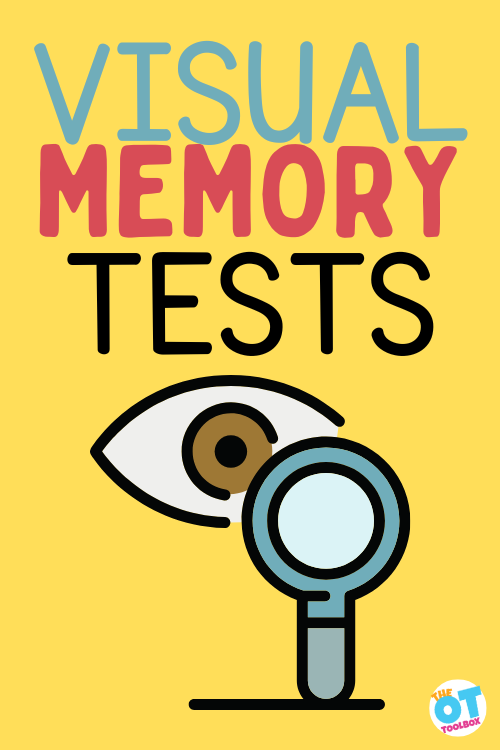
Testing Visual Memory
When it comes to testing visual memory, occupational therapists evaluate using several standardized tests as well as non-standardized screenings.
Essential to testing visual memory skills is the functional aspect: Can the individual utilize short and long term memory in the retrieval of visual information in order to accomplish functional tasks? Answering this question can provide both opportunities to challenge deficits, as well as target key areas of functional performance that need to be addressed.
Visual memory tests are part of a wider assessment of visual perception or tests of visual motor integration. The occupational therapy provider completes these standardized vision tests during an OT eval. However, there is more to it that the standardized testing.
Using functional performance to assess visual memory is a key part of the occupational therapy assessment. One role of the OT provider is completing a visual motor test during functional tasks, using skilled interventions.
For example, the OT can ask the client to remember items that are needed in a particular activity. They can select and/or identify several items to brush teeth: toothbrush, toothpaste, cup, dental floss, water.
The therapist could assess to see if the client can remember all four words or items after a 10 minute delay, and then a 30 minute delay. At least 3/4 of the items should be recalled. This test can assess visual memory skills in combination with a functional task.
To further analyze the visual memory aspect, the therapist could point to objects in the room and ask the client to recall them immediately, after 5 minutes, and at the end of the therapy session.
Visual Memory Tests
Some of the standardized tests that assess visual memory skills include:
- Motor Free Visual Perception Test (MVPT)– overall visual perception screening tool
- Test of Visual Perceptual Skills – breaks down skills into categories
- The Developmental Test of Visual Perception – thorough test of skills
- Test of Visual Motor Skills/Perception – a general screener to assess basic skills. Not a great test of different sub categories.
- The Visual Memory Span Test- This test measures visual memory capacity by presenting a series of pictures to the participant and asking them to recall them in a specific order.
- Rey-Osterrieth Complex Figure Test- This test requires the person to draw a complex figure from memory after seeing it for a short period of time. The test assesses visual memory, perceptual organization, and constructional ability.
- Visual Patterns Test- This test requires the person to reproduce complex patterns after seeing them for a short period of time. The test assesses visual memory and visual processing ability.
- Benton Visual Retention Test- This test requires the person to look at a series of geometric figures for a short period of time and then draw them from memory. The test assesses visual memory and visual perceptual skills.
- Wide Range Assessment of Memory and Learning- This is a comprehensive memory assessment that includes tests for visual memory, verbal memory, and other memory domains. The visual memory tests include tasks such as recalling pictures and designs.
- Wechsler Memory Scale- This is another comprehensive memory assessment that includes tests for visual memory, verbal memory, and other memory domains. The visual memory tests include tasks such as recognizing and recalling visual stimuli.

Looking for more vision activities? Try these:
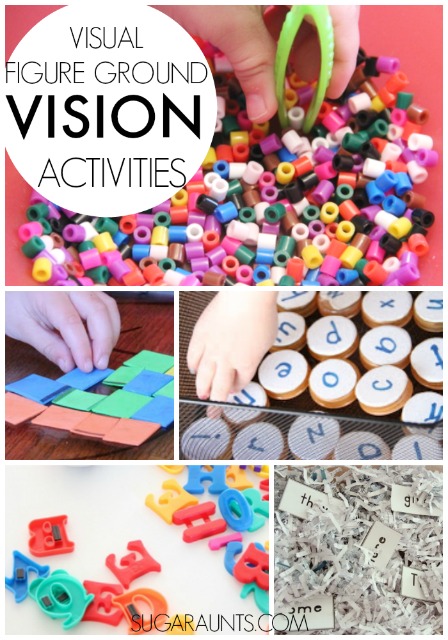
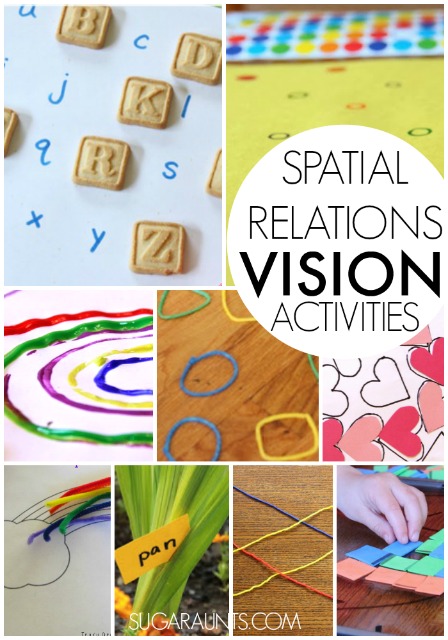
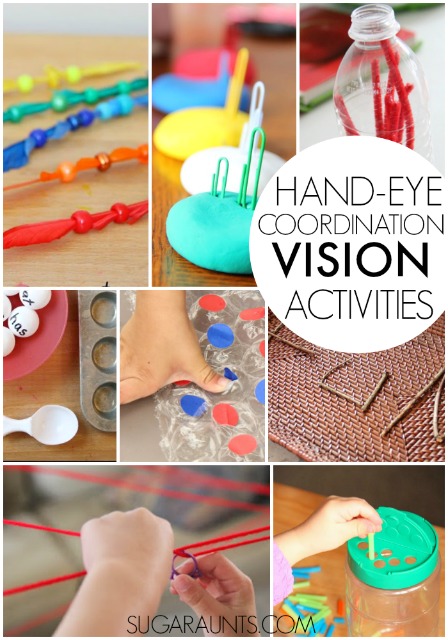
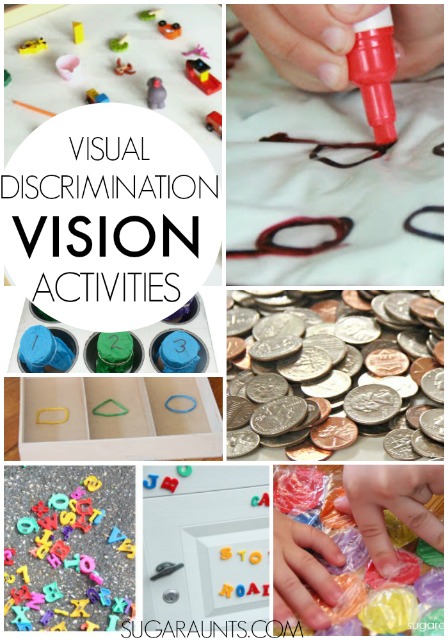

Colleen Beck, OTR/L has been an occupational therapist since 2000, working in school-based, hand therapy, outpatient peds, EI, and SNF. Colleen created The OT Toolbox to inspire therapists, teachers, and parents with easy and fun tools to help children thrive. Read her story about going from an OT making $3/hour (after paying for kids’ childcare) to a full-time OT resource creator for millions of readers. Want to collaborate? Send an email to contact@theottoolbox.com.
The Visual Processing Bundle has everything you need to work on underlying visual processing skills so you can help students with classroom tasks like copying written work, letter reversals, and messy handwriting in fun and engaging ways!
- Over 235 pages of workbooks, worksheets, e-books, handouts, activity cards, tracking tools
- Classroom accommodation ideas
- Checklists
- Multi-level visual-motor integration workbooks
- Pencil control worksheets
- Classroom and therapy activities
- Activity cards
- Specific and open-ended activity cards
- Visual tracking guide
Target visual memory skills and many other aspects of visual perception and visual motor integration at a special price of just $18 (Regularly $45). Get your copy here.


